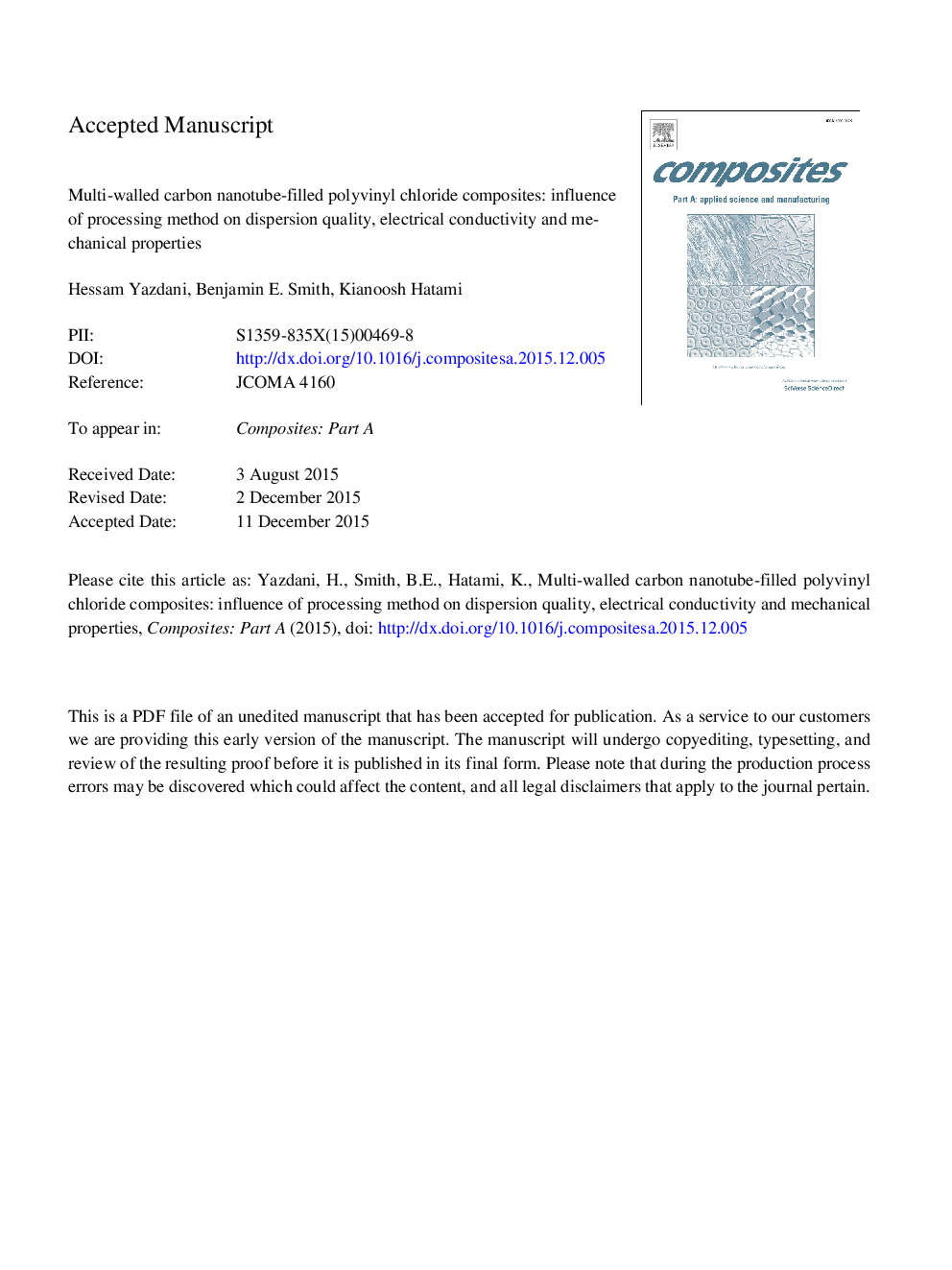| Article ID | Journal | Published Year | Pages | File Type |
|---|---|---|---|---|
| 7891202 | Composites Part A: Applied Science and Manufacturing | 2016 | 53 Pages |
Abstract
The influences of dispersion quality and processing conditions on the electrical and mechanical properties of multi-walled carbon nanotube-filled polyvinyl chloride (MWCNT/PVC) composites are examined for potential use in sensor-enabled geosynthetics and other applications involving electrically-conductive polymer composites. Electrical conductivity and mechanical properties of the composite samples made using four different dispersion methods (i.e. probe sonication, bath sonication, mechanical stirring and batch mixing) are measured. Subsurface dispersion in the samples is quantified using laser scanning confocal microscopy and scanning electron microscopy, indicating that MWCNT bundle volumes resulting from all dispersion methods had a log-normal distribution. Dispersion qualities using different mixing methods are compared using the Kolmogorov-Smirnov D-statistic. Findings indicate that samples with higher dispersion quality exhibit greater ultimate strength and failure strain, whereas poorly-dispersed specimens have greater elastic modulus values, which are found to be in good agreement with those predicted by the Halpin-Tsai model.
Keywords
Related Topics
Physical Sciences and Engineering
Materials Science
Ceramics and Composites
Authors
Hessam Yazdani, Benjamin E. Smith, Kianoosh Hatami,
